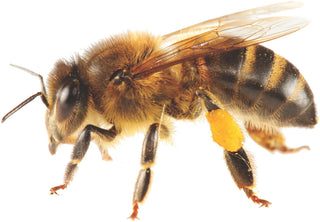Insulation matters
Honeybees thrive in a thermally superior, more hygienic HiveIQ beehive.

Thermally superior by design
EPS beehives help you keep more productive bees… With more than six times the insulation value of a standard wooden beehive, The HiveIQ beehive provides an environment more akin to living in a large hollow tree with a large thermal protective mass.
The excellent thermal performance of the HiveIQ EPS beehive provides a healthy environment for honeybees all year round. It keeps the colony dry and warm throughout winter and cool, productive and healthy throughout summer.
40 mm thick solid EPS hive top and walls prevents heat loss and heat radiating into the hive during hot weather.
Recessed queen excluder enables a perfect seal between the brood box and second box.
The ventilated floor allows the colony to manage airflow, humidity in the hive.

The interlocking design includes the queen excluder to ensure a perfect seal between hive bodies and frames eliminating hot or cold drafts and prevents water entering the hive

The interlocking design between hives ensures a perfect seal between hive bodies, frames eliminating hot or cold drafts and prevents water entering the hive
Insulation really matters
Keeping warm in winter and cool in summer takes energy (honey) and honeybees (Heater bees) assigned to the task of maintaining the temperature. The better insulated the beehive, the less honey and less honeybees are required.
Honeybees are the masters of climate control in their hives, and they need to be. Maintaining brood temperature at a substantial 34°-36°C (93°-97°F) is critical for honeybee colonies to rear brood and survive and flourish as a colony.
Wild honeybees choose to live in the hollows of large trees and logs because they provide a large protective thermal mass, reducing the amount of energy required to maintain the hive’s climate.
In contrast, most domesticated colonies are housed in fabricated timber hives with a typical wall thickness of less than an inch offering very little insulation against the outside elements.
The insulation is further decreased when the timber becomes waterlogged during damp cold winters leading to the rapid consumption of honey stores, winter clustering, and susceptibility to diseases such as Nosema and Chalk brood.

How do honeybee colonies stay warm in winter?
The honeybee colony’s ability to survive the winter depends on their food stores. Keeping warm takes energy in the form of honey. In winter, the bees cluster around the brood to keep warm. The more thermally efficient the hive, the less honey is consumed for generating heat energy, the bees are required to be heater bees – freeing up the hives resources for other important activities such as foraging, hive hygiene and brood raising.

What is the problem?
For more than 170 years, the standard beehive has been a timber hive, a revolutionary invention by Lorenzo Langstroth in 1851. Since then, the form, function and material technology used are largely unchanged from Langstroth’s original designs.
HiveIQ EPS beehives help you keep more productive bees

Explore our pollen collector






